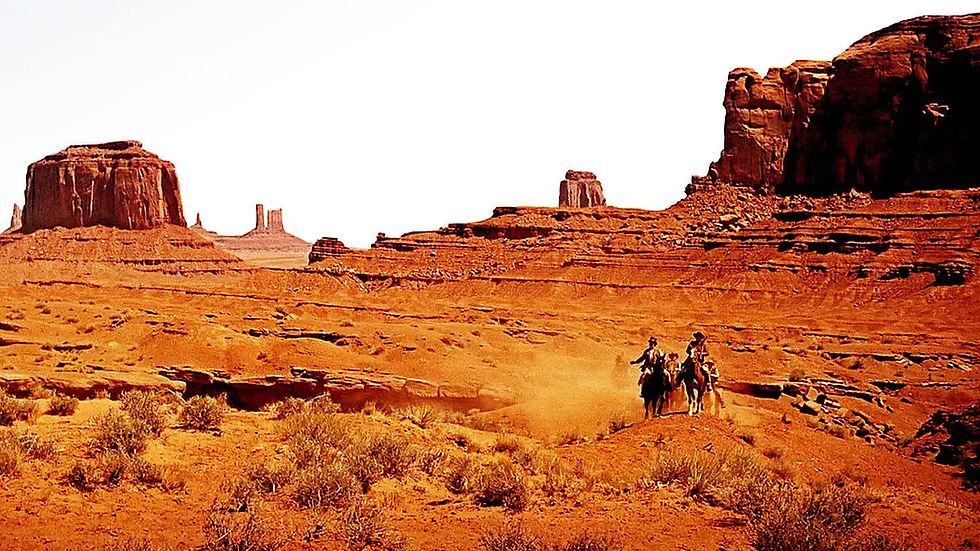天堂之日 & 拾穗者 中自然景观扮演的文化角色
- M

- Sep 25, 2020
- 5 min read
Updated: Sep 26, 2020
景观不仅是自然,丘陵和麦田,而且也是一种文化产物。
landscape is not just nature, hills and wheat fields, but is a cultural product as well.

Stills from Terrence Malick's Days of Heaven (left) and Agnes Varda's The Gleaners and I (right)
“我和我的拾荒者”和“天堂的日子”都描述了居民生活中的拾荒行为是工业化背景下农业生产生活的重要组成部分,它们展示了人们与土地互动以创造和收集土地的过程。生产材料。
在美国大规模机械化生产的时代,耕地是人们留在这片土地上维持家庭生计的主要生产活动。不断发展的工业革命改变了居民的生活,削弱了他们自己的认同感。在特伦斯·马利克(Terrence Malik)的《天堂的日子》中,成为拾穗者似乎是生存的基本需求。三角恋爱故事的背后是“难以捉摸的象征主义和对商业的敬畏感”,并暗示了与20世纪初与田野和农业文明联系在一起的资本,经济,文化和社会关系。女孩子有着一种不可避免的孤独感,无知的感觉与女孩作为一个局外人的和平无辜的声明,与自然风光紧密结合在一起。
相比之下,在进行收集工作的背后,放大到艾格尼丝·瓦尔达(Agnes Varda)的“我与拾荒者”一书中,便是不同的弱势群体对生活的热爱相似。我们随机丢弃的零件和废料在他们眼中是惊喜。将房子被腐蚀的角落视为一幅抽象画,在皱着的手的皮肤上找到艺术自画像,玩无辜地抓住过往车辆的游戏,在旧货市场的碎片中发现作为创新材料的美丽和可能性,我和拾穗人给了我们独特的,宝贵的观察者对正常生活的看法。 “收集是爱,垃圾是美丽的。”工业技术的发展压缩了人们的作品的生产价值,但是,瓦尔达创造了一个新的记录观点,她自己作为拾穗者的一部分出国参加了这一运动,向我们表明“拾穗”可以简单地复制珍贵的东西。充满活力的当代社会,可以用来与“天”中的资本主义隐性讽刺关系建立一种比较关系。
在电影语言方面,这两部电影都为观众提供了无辜的观看者视角,而出色的《天国》摄影则具有和平,抒情和古典主义的图像风格。女孩的诗意叙事也增强了这种感觉。看到蝗虫在麦秆上的作物嚼着的景色,真是太美了,这真是令人感动。天空,河流,泥土,马匹,机器在日落的黄金时段闪耀。真正的天堂不是虚构的书面世界,而是人们跳舞,耕种,生产和生活的大地。
至于“我和拾穗者”中的场景,他们带有一种流动感,更加感性,城市拾荒者正在拾拾废弃的食物,工业废料,而瓦尔达则作为观察者“拾拾”在她身上看到和感觉到的东西。创意之旅。葡萄,水果,牡蛎,零件,娃娃,地图,绘画,心形土豆,无手钟。他们被发现并转化为具有心灵和生活智慧的艺术品。电影中的人们通过拾音动作发现的是被遗忘的欢乐和在废弃的城市角落里的密封记忆
《我与拾穗者》的另一个有价值的特征是,瓦尔达本人在她一生中收集着艺术上的瞬间:从发霉的角落到有框的艺术品的转变,充满心形土豆的展览。回顾电影的先前内容,该电影实际上就像是她的“拾音动作”拾音过程的集合。电影中有许多琐碎的碎片,大多数电影摄制者通常将其视为无用的碎片。然而,瓦尔达通过节奏的掌握,蒙太奇的转换以非常个人化的方式发现了它们的价值,并将它们与文学叙事联系起来,最终达到了杰出的艺术价值。例如,忘记盖上镜头盖时,晃动了很长时间。瓦尔达(Varda)为这部“残片”找到了节奏,并以一种文学和创造性的方式将其融入电影中。
Both “The Gleaners and I” and “Days of Heaven” depicted the action of gleaning in a resident's life as an important element of agricultural production life during the industrialized background, which demonstrated a process of how people interact with the lands to create and collect production materials.
In the era of large-scale mechanized production in the United States, tending the fields was the main production activity for people to stay on this land to maintain household livelihoods. The increasing industrial revolution changed the lives of residents and diluted their own sense of identity. In Terrence Malik’s “Days of Heaven”, becoming a gleaner more seems to be a basic need for survival. Behind the triangle love story is “elusive symbolisms and mercurial sense of awe” and a hint to the capital, economy, cultural and social relations that was linked to the fields and agricultural civilization in the early 20th century. There was a sense of ineluctable solitude, feeling of rootlessness with the girl’s peaceful innocent statement as an outsider, integrating with the shots of natural scenery tightly.
In contrast, zooming into Agnes Varda’s “The Gleaners and I”, behind the gleaning action is the enthusiasm of different vulnerable groups living with a similar love for life. The parts and waste that we randomly discard are treasured as surprises in their eyes. Seeing the corroded corners of the house as an abstract painting, finding an artistic self-portrait in the skin of wrinkled hands, playing the game of grabbing passing vehicles innocently, discovering the beauty and possibility as innovative materials in a scrap of the flea market, The Gleaners and I gave us a unique and precious observer's perspective to the normal life. “Gleaning is loving, trash is beautiful.” The development of industrial technology has compressed the production value of people ’s work, however, Varda creates a new record view which herself went abroad to participate in the movement as part of the gleaners to show us that “gleaning” can simply reproduce a precious vitality in the contemporary society, which can be used to establish a comparative relationship with the irony of the hidden pressure of capitalism in the “Days of Heaven”.
In terms of film language, both films provide an innocent viewer's perspective to the viewers, the splendid photography of “Days of Heaven” has a peaceful, lyrical, and classicist image style. The girl’s poetic narrative also reinforces this feeling. It is very touching to see the scenes that locusts chew on crops on wheat stalks, all the beauty of nature; sky, rivers, earth, horses, machines shining in the golden hours of sunsets. The real heaven is not a fictional written world, but an earthy ground where people were dancing, farming, producing, and living with it.
As for the scenes in “The Gleaners and I”, they are more sensual with a sense of fluid, the urban scavengers were gleaning discarded foods, industrial wastes, while Varda as an observer who is “gleaning” what is seen and felt in her creative journey. Grapes, fruits, oysters, parts, dolls, maps, paintings, heart-shaped potatoes, clocks without hands. They are found and were transformed into artworks with hearts and the wisdom of life. What people in the film find through the gleaning action are forgotten joys and sealed memories in the discarded urban corners.
Another valuable characteristic in “The Gleaners and I” is that Varda herself gleaning artistic moments in her life: the transformation from a moldy corner to a framed artwork, the exhibition full of heart-shaped potatoes. Looking back at the previous content of the film, the film was actually like a collection of her gleaning processes of “the gleaning action”. There are many trivial fragments in the film which will normally be treated as useless pieces by most filmmakers. However, Varda discovered the value of them through mastery of rhythm, the conversion of montages in a very personal way, connected them with literary narration which reached an outstanding artistic value finally. For example, there was one shaking long take clip was made when the lens cover was forgotten to close. Varda found a rhythm for this "scrap film" and fit it in the film with a literary and creative way.



Comments